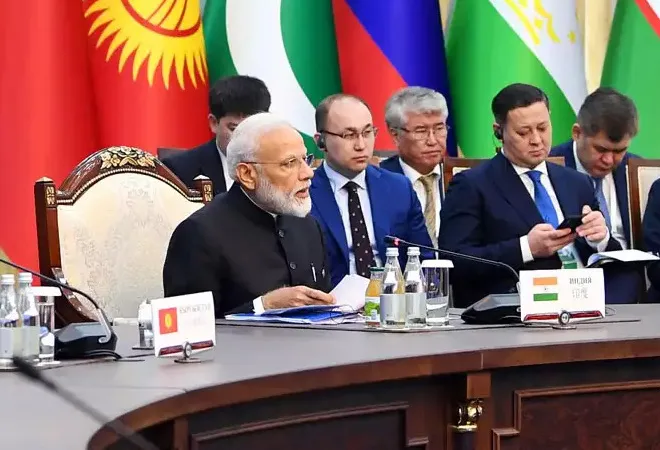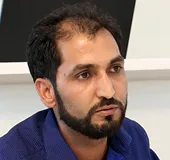-
CENTRES
Progammes & Centres
Location
New Delhi must leverage its SCO presidency to ensure greater cooperation amongst the member countries against drug trafficking

The Shanghai Cooperation Organisation (SCO) member countries provide transnational passage to about 80 percent of the world's illicit opium trade that emanates from the fields of Afghanistan. Though SCO, since its inception, has called for greater convergence on the prevention of narcotics smuggling and terrorism under the Regional Anti-Terrorist Structure (RATS), rising drug addiction trends and narcotics trade within the SCO region prove the inefficacy of the bloc. Most of the narcotics trade within the SCO region goes unnoticed, providing a significant funding source for anti-state activities by extremists and terrorists. The increasing use of new technologies for drug trafficking and weapons smuggling by terror organisations and insurgent groups has direct security implications for the SCO and the whole Eurasian expanse.
SCO and illicit narcotics
In 1996, China, Kazakhstan, the Kyrgyz Republic, Russia, and Tajikistan formed the Shanghai Five. It was renamed the SCO in 2001 after Uzbekistan joined the grouping. India and Pakistan joined the regional forum in 2017, with Iran slated to acquire permanent membership in 2023. After 2006, the SCO member states agreed to combat regional drug trafficking, which had become a potent tool to finance terrorism and other anti-state activities. The grouping also expanded cooperation with other global organisations to facilitate international collaboration on this front. The SCO Secretariat in Beijing hosted the Paris Pact Initiative (PPI) in 2018 to further enhance international cooperation against drug trafficking. The PPI is a broader international grouping of 58 countries and 23 organisations working against illicit drug trafficking. SCO has also signed memorandums and agreements with the UN Office on Drugs and Crimes (UNODC); the Central Asian Regional Information and Coordination Centre for Combating Illicit Trafficking in Narcotic Drugs, Psychotropic Substances and Their Precursors (CARICC); and the Collective Security Treaty Organisation (CSTO). Increased multilateral and multi-agency cooperation and coordination under the SCO led to the seizure of 181 tonnes of heroin and 667 tonnes of hashish between 2011 and 2017.
The increasing use of new technologies for drug trafficking and weapons smuggling by terror organisations and insurgent groups has direct security implications for the SCO and the whole Eurasian expanse.
Increased smuggling via Northern Route and Golden Crescent
In 2021, Afghanistan supplied 80 percent of the world's opium and heroin, dominating the worldwide opium market. The narcotics from Afghanistan are smuggled into greater Eurasia, Europe, and the rest of the world through three primary routes:
The 2,387-km-long porous border between Afghanistan and Central Asia forms the “Northern route”, providing ample space for rampant narcotics smuggling. The drugs from Central Asia are smuggled into the Russian Federation and Eastern Europe. An estimated 15 to 20 percent of supplies to Russia and beyond are trafficked via Tajikistan on this route. In 2014, more than 80 percent of narcotics supplied to Russia and Eastern Europe passed through Tajikistan, accounting for 30 percent of the GDP of this poor Central Asian Republic. The narcotics trade provides a lucrative option for the political incumbents in Tajikistan and Kyrgyzstan to abuse state structures to reap windfall profits. From Tajikistan, the narcotics flow into Uzbekistan and Kazakhstan, ending up in Russia or Europe. In Kazakhstan, an estimated 450,000 drug addicts consume 30 percent of the opium smuggled from Afghanistan. The remaining 70 percent is transported further to Russia and Europe. Russia, with around 6 million drug addicts, has a drug-related mortality rate of 10.2 per 100,000 population. Drug addiction in Russia has also contributed to the HIV epidemic that affects 1.6 million people.
More than 80 percent of narcotics supplied to Russia and Eastern Europe passed through Tajikistan, accounting for 30 percent of the GDP of this poor Central Asian Republic.
The “Golden Crescent” or Southern route is another important international narcotic smuggling route from Afghanistan to Iran and Pakistan for forward supplies to the Gulf, Africa, and South Asia. Pakistan, the world's most-drug-affected country, has 7.6 million drug addicts. In 2019, Iran recorded more than 2.8 million drug abusers. According to estimates, more than 40 percent of drugs from Afghanistan transit through Pakistan before reaching India and other international markets. Following the strengthening of India's security grid along its border with Pakistan, which effectively lowered the infiltration of insurgents and narcotics, the narcoterrorists have resorted to drones to drop weapons and drugs inside India's territory. According to India's Border Security Force, in 2022, 17 drones were shot down or captured along the border, leading to the seizure of 26,469 kg of drugs.
The sea route to South Asia, the Gulf, and other international markets via Iran and Pakistan is the preferred transit option for drug traffickers. According to estimates, 60 to 70 percent of drugs are smuggled into India by sea via the Golden Crescent. In 2021, around 3,000 kg of drugs, allegedly originating from Afghanistan, were seized at Gujarat's Mundra port. Till November 2022, out of the 3,017 kg of seized heroin, 55 percent was seaborne, and of the 122 kilograms of seized cocaine, 84 percent was smuggled through sea routes.
China is the only SCO member state where drug trafficking activities are controlled; however, since COVID-19, postal services and waterways have been frequently used for drug trafficking rather than the traditional channels. Drug trafficking was more intimately linked online and offline. In 2021, there were 5,000 cases of online drug trafficking. Drug transactions have evolved away from mainstream chat systems towards niche social tools, second-hand trading platforms, gaming websites, and the dark net. In China, drug-related financial transfers have spread beyond online banking systems and into virtual and game currencies.
Drug smuggling has become a significant funding source for anti-state activities by terror groups and extremists.
India should pitch for greater convergence
The increasing narcotics trade and greater involvement of terror outfits have sprung geopolitical and geoeconomic challenges for all the SCO member countries. Barring China, all other SCO member countries are reeling under the menace of drugs transported from Afghanistan and the increasing drug addiction. The instability in Afghanistan has risen tremendously as the drug trade on both the Northern Route and Golden Crescent witnesses more involvement of terror groups and anti-state actors. Drug smuggling has become a significant funding source for anti-state activities by terror groups and extremists. Though SCO aims to upgrade and solidify the antiterrorism capabilities with the core principle of non-intervention, India must use its growing economic clout and substantial intellectual capital to pitch strongly for a coherent policy on illicit drug trafficking. As most member countries in the SCO face drug problems of alarming proportions, New Delhi has to consider investing its diplomatic capital in evolving a progressive programme for the monthly sharing of narcotics data within the SCO region under RATS. Apart from that, more attention must be paid towards mapping narcotics, crime analysis and financial portals for information sharing and strategy to control the flow of drugs through new technologies and to cut down the money flow of terror groups omnipresent across the SCO geography. New Delhi must leverage its SCO presidency to ensure greater harmony amongst the member countries to meet this shared challenge.
The views expressed above belong to the author(s). ORF research and analyses now available on Telegram! Click here to access our curated content — blogs, longforms and interviews.

Ayjaz Wani (Phd) is a Fellow in the Strategic Studies Programme at ORF. Based out of Mumbai, he tracks China’s relations with Central Asia, Pakistan and ...
Read More +